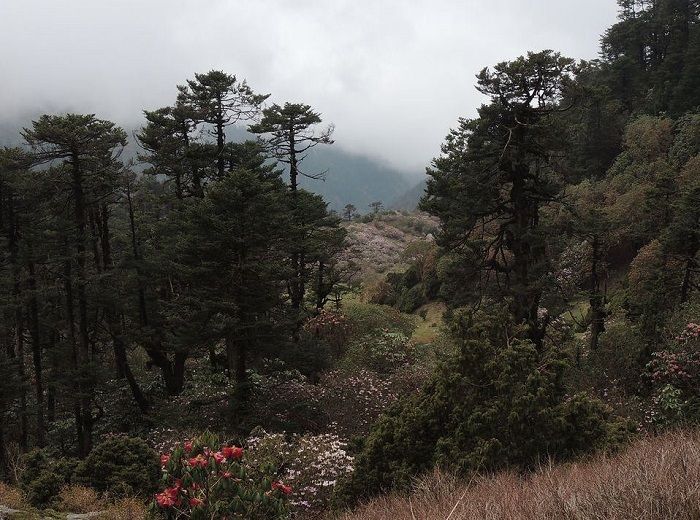Why Do Oak and Rhododendron Forests Protect Himalayan Life
When most people picture the Himalayas, they think of ice-draped peaks stabbing the sky. But the real heartbeat of these mountains lies lower, in forests of oak and rhododendron. They aren’t just trees, they’re survival machines, keeping entire ecosystems alive. The kuari pass trek takes you straight through these green fortresses, and you start to see their true weight. Without them, the Himalayas would unravel, piece by piece, like a rope losing its fibers. Let’s dig into why these woods matter more than most people ever realize.
Keeping the climate steady
Up high, the weather is brutal—burning sun by day, freezing by night. Oaks and rhododendrons smooth those swings, creating stable pockets of air and moisture. They hold humidity, block howling winds, and make space for smaller life to exist. Without them, the ground plants would crisp and die, breaking the food web entirely. Inside these forests, you feel it—the air softens, the temperature balances, the chaos settles. They are living thermostats, keeping the mountain from eating itself alive.
Wildlife highways in the hills
For animals, these woods are highways, not just homes. Bears, leopards, and rare birds move safely through the connected cover they provide. If the forests fragment, creatures get trapped, cut off, and populations collapse. Oak acorns feed grazing animals, rhododendron blossoms keep bees alive in thin air. Each rustle in the branches is life moving, surviving, continuing the chain. Trekking companies like Trekup India often highlights this truth—these corridors are the veins of Himalayan survival.
Hidden vaults of rare plants
Step inside, and the forest floor is a secret vault. Ferns, orchids, and mosses thrive under the shade where harsh winds can’t reach. These plants aren’t decoration—they’re reservoirs of genetic strength for changing climates. Healers and botanists prize them for centuries-old remedies tied to mountain tradition. Their survival is science, culture, and spirit woven into a single green thread. Every sprout proves nature adapts when given room to breathe and endure.
Protectors of mountain water
The springs of Kuari Pass exist because these trees play waterkeepers. Roots soak up rainfall like sponges, then release it slowly into steady streams. That’s why mountain water runs all year, not just in monsoon months. Wildlife, villages, even valleys far below depend on this forest plumbing system. Without it, rivers dry, scarcity rises, and conflict follows down the line. Every trickle here is their silent signature keeping the lifeblood flowing.
Colors tied to culture
In spring, rhododendrons ignite the slopes in crimson fire, while oaks shift golden. These colors aren’t just beauty—they’re symbols etched into Himalayan folklore and village rituals. Blossoms mean abundance, survival, and the turning of nature’s sacred calendar. The forests are more than ecosystems; they’re cultural mirrors reflecting identity and memory. Hike here, and you’re walking inside a living story told by seasons themselves. The kuari pass trek becomes both adventure and anthropology in motion.
Conclusion
The oak and rhododendron forests of Kuari Pass are far more than scenery. They’re soil-keepers, water-holders, wildlife highways, and cultural storybooks of the Himalayas. To walk among them is to witness survival strategies written over centuries. They prove biodiversity isn’t luxury—it’s the architecture of existence itself. The mountains breathe because these forests refuse to fall. And that’s the story too many forget until it’s already gone.
